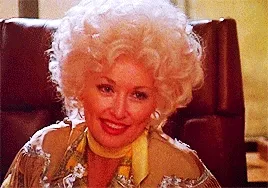‘9 to 5’: What HR professionals can learn from the classic comedy
Over 40 years later, the workplace revenge fantasy can still teach HR professionals a thing or two.

9 to 5/IPC via Giphy
• 3 min read
Most workplace-training videos are either sleepers, or worse—woefully out of date. But there’s at least one that’s both entertaining and speaks to the host of dilemmas facing the humble HR professional, and it’s a 42-year-old comedy in which Dolly Parton fantasizes about hog-tying her loathsome boss.
The entire HR field stands to learn something from 9 to 5. Starring Parton, alongside Jane Fonda and Lily Tomlin, the whimsical romp masterfully brought issues including pay equity, flexible hours, and work-life balance to the fore back in 1980, the dawn of the “greed is good” era. Amid all the slapstick gags, it shows how the issues HR is dealing with today have been festering for decades.
The plot: After her husband leaves her for his secretary, Judy Bernly (Fonda) gets a job as a secretary at a soul-crushing corporation called Consolidated Companies. There, she meets fellow secretaries Violet Newstead (Tomlin) and Doralee Rhodes (Parton).
Doralee is the secretary of the office’s cartoon-villain boss, Vice President Frank Hart (Dabney Coleman), who aggressively harasses her, falling on top of her in one of the opening scenes.
When Judy and Violet learn that Frank has been harassing Doralee, and Violet is passed over for a promotion because she’s a woman, the trio blow off some steam by smoking a fatty that sets alight a workplace revenge fantasy. After a series of unlikely events, they actually do end up taking Frank hostage, and with Violet in charge at the office, they create a more equitable workplace and watch morale and productivity skyrocket. (As a consequence of their transformative efforts, Frank gets promoted…and transferred to Brazil.)
Quick-to-read HR news & insights
From recruiting and retention to company culture and the latest in HR tech, HR Brew delivers up-to-date industry news and tips to help HR pros stay nimble in today’s fast-changing business environment.
Its importance for HR: Though the film was released in 1980, the workplace revolution it depicts may not be all that different from what you’re trying to inspire in your own organization. The women, for example, establish on-site child care, still considered a progressive perk and offered by a select few companies such as Wisconsin’s AriensCo, a manufacturer of home and garden machinery, and Salt Lake City’s Recursion Pharmaceuticals. They also institute an equal-pay policy, one that stands out, since even today, women earn just 82 cents for every dollar men earn, according to Payscale’s 2022 State of the Gender Pay Gap report, which surveyed 933,000 US employees from January 2020 to January 2022. (Women earned 67 cents for every dollar men made in 1980, according to a Pew Research Center analysis.)
We’re not suggesting that you topple your workplace’s social order. (Or are we???) But if used as a reference point, 9 to 5 illustrates the progress HR has made toward achieving gender equity, and how far society still has to go. It’s a workplace training video unlike any other.—SB
Quick-to-read HR news & insights
From recruiting and retention to company culture and the latest in HR tech, HR Brew delivers up-to-date industry news and tips to help HR pros stay nimble in today’s fast-changing business environment.